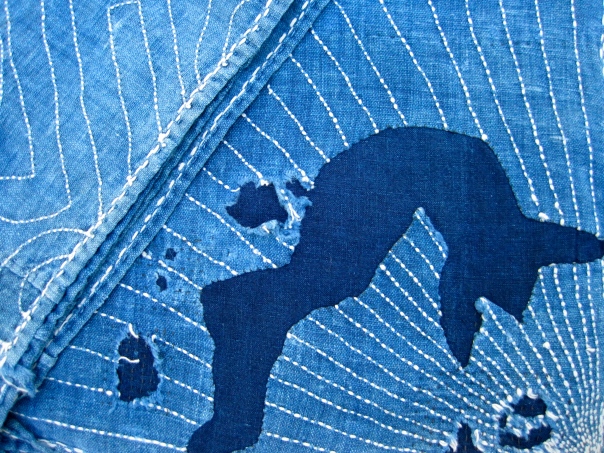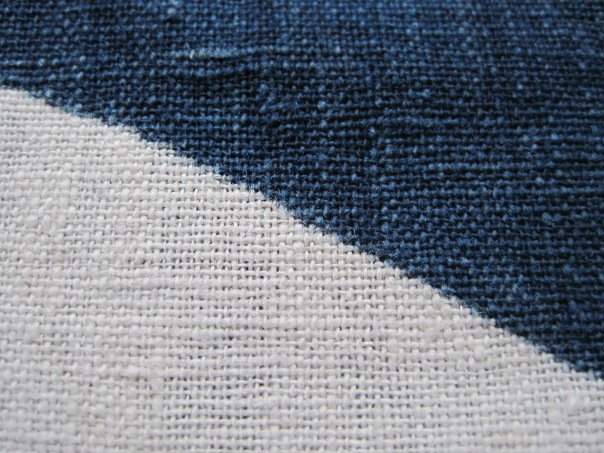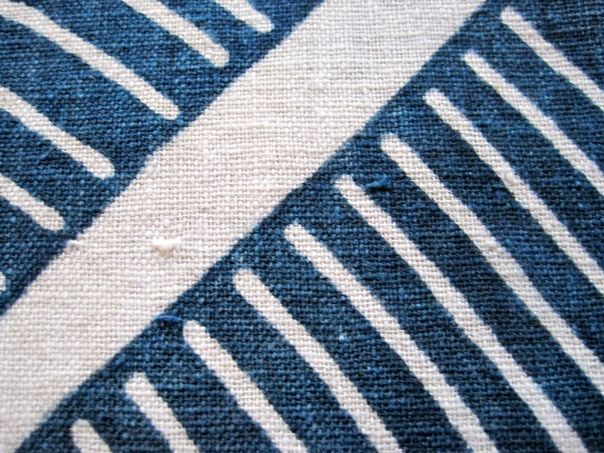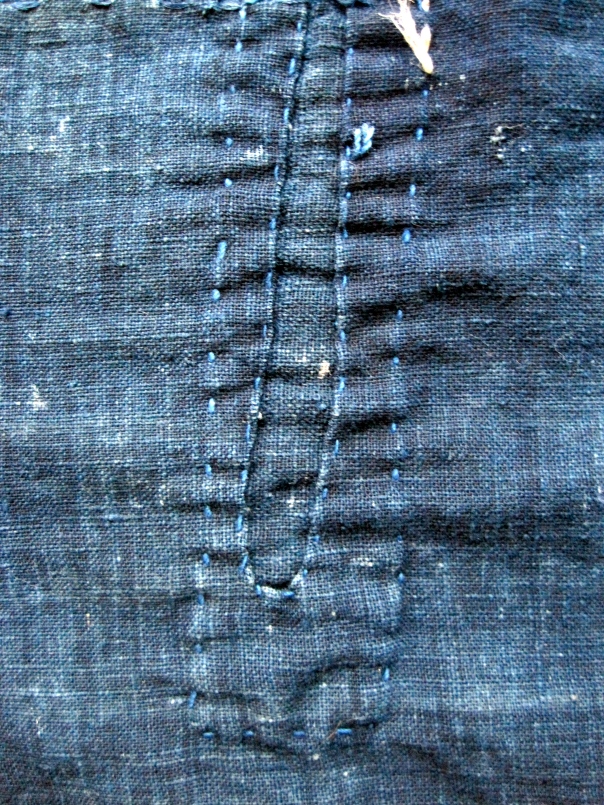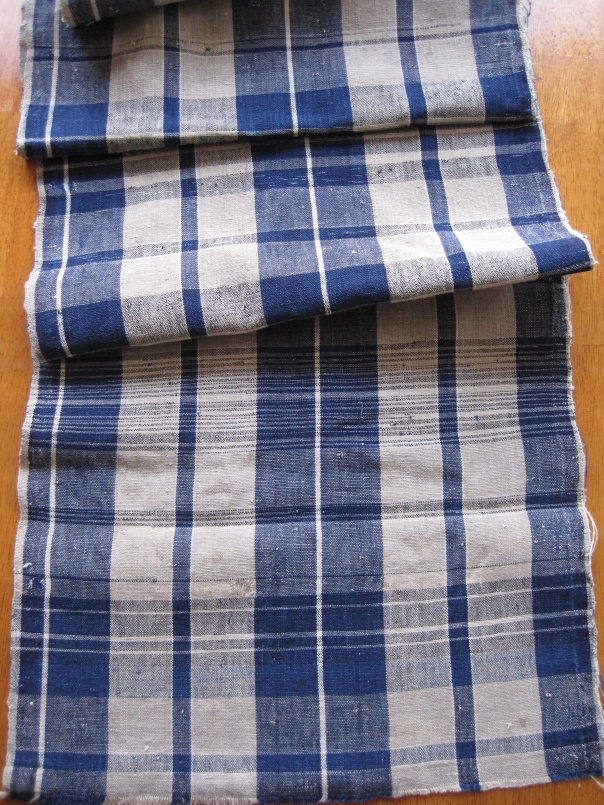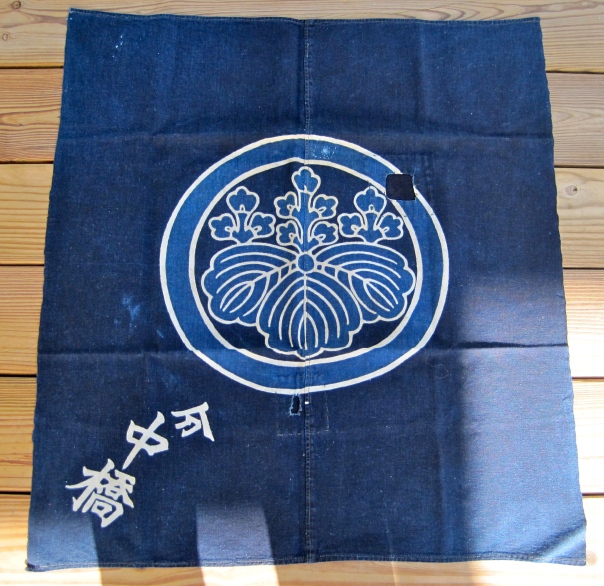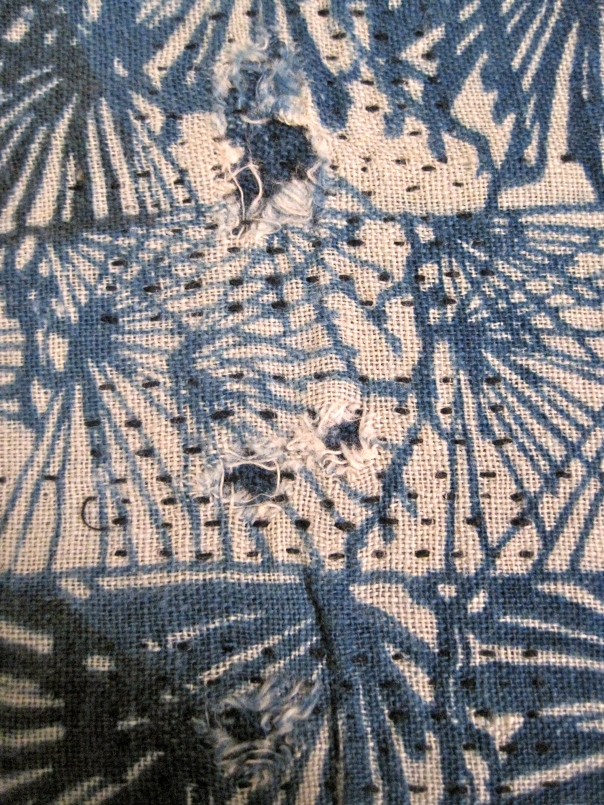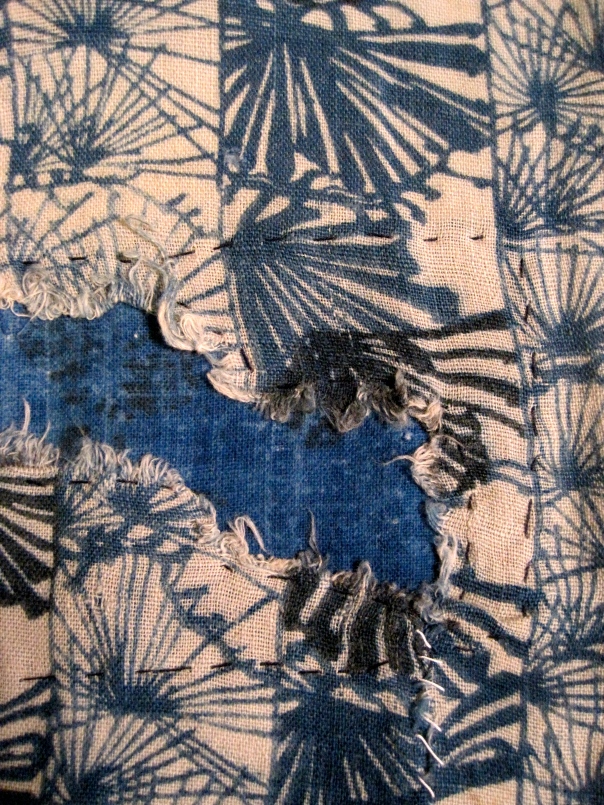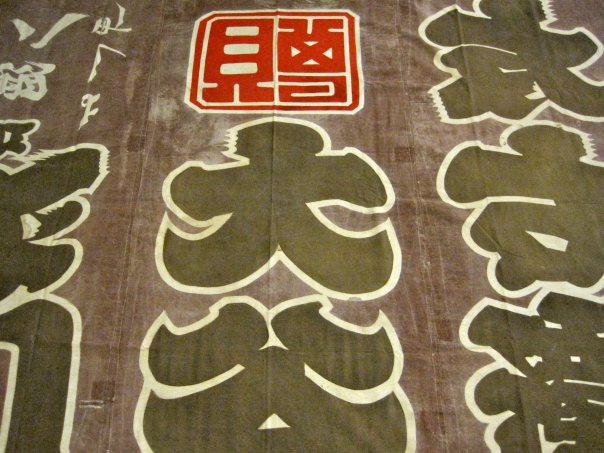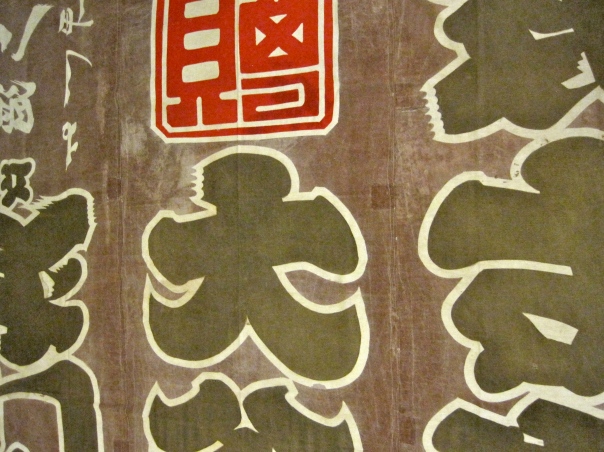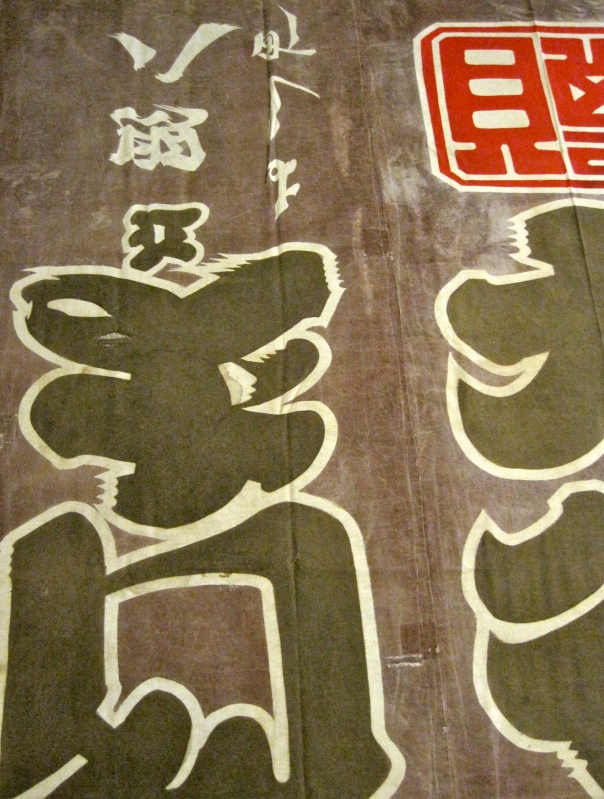It has been a while since I have posted on this blog. I have been busy sourcing antique and vintage fabrics and dyeing katazome textiles. I have also been working on a new website and blog. Please visit our new website for blog posts on antique Japanese textiles and my new indigo dye projects. We also have a shop where you can purchase fabrics and an experiences page where you can learn about upcoming classes and textile tours. Visit the new website at: www.nsomerstextiles.com
Category Archives: Boro
Antique Japanese Shifu: Paper and Cotton Textile
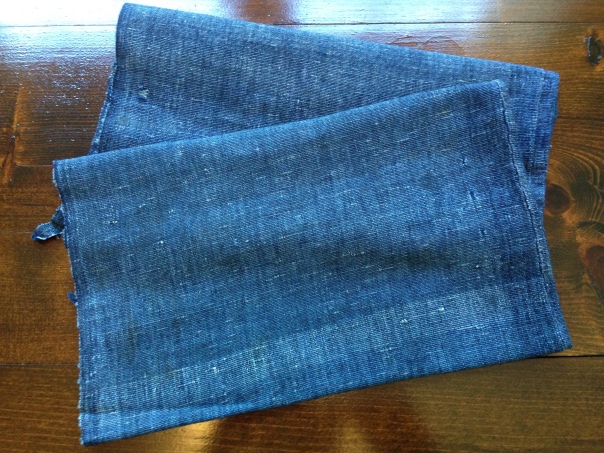
I found this fabric in Tokyo back in July. at first I thought it was just a piece of indigo dyed cotton, but after picking it up and noticing the texture and light weight I inspected it closer and found that it has a cotton warp and a paper weft. The fabric must date to around the early 20th century.
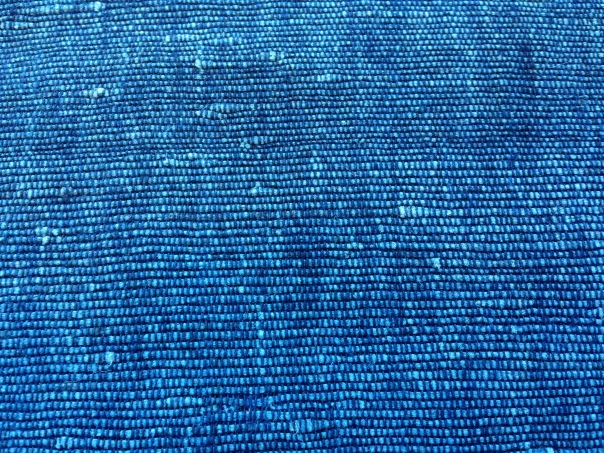
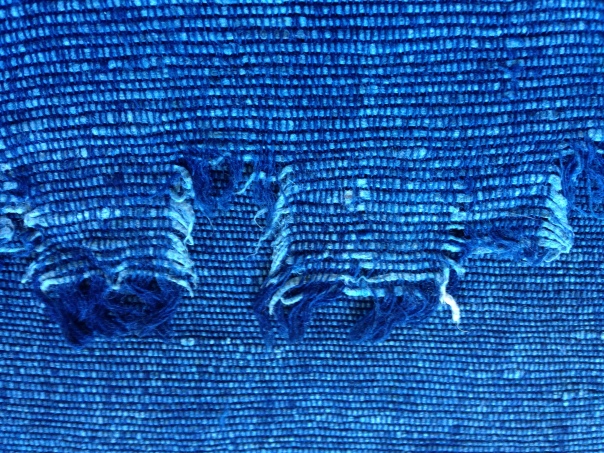
Above you can clearly see the paper weft threads in one of the ragged ends of the fabric. Below I placed a skein of my handmade paper thread next to the fabric.
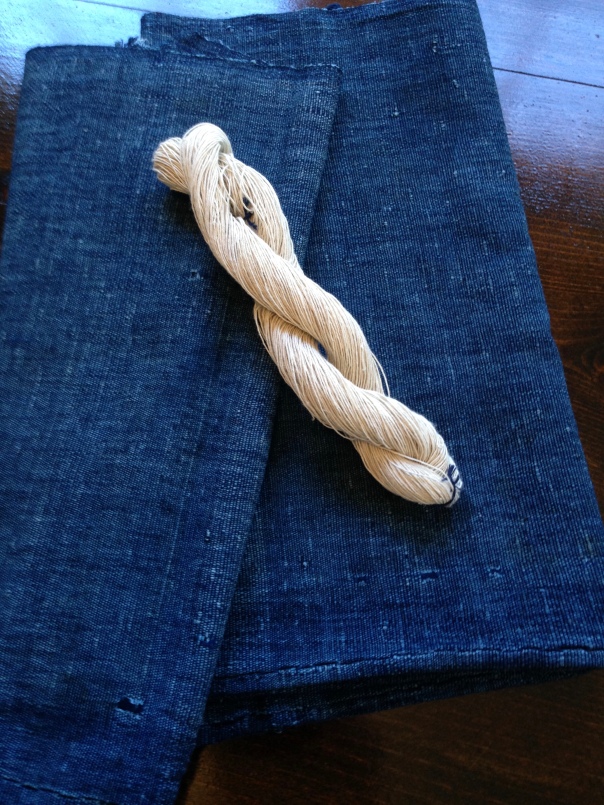
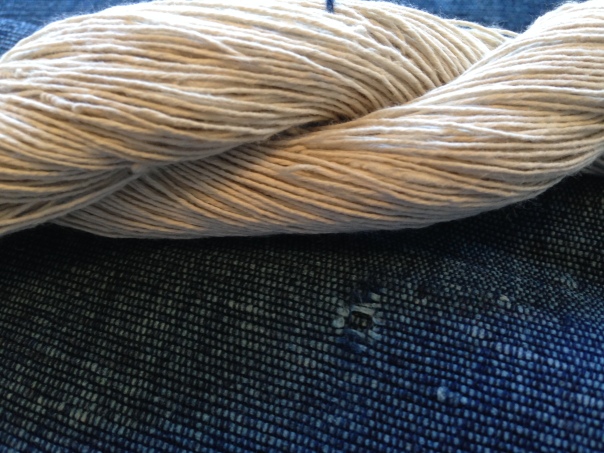
While visiting Kyoto I went to Gallery Kei, the gallery had recently exhibited a huge collection of antique paper fabrics. Below is a link to the exhibit at Gallery Kei and some photos of the interior of this beautiful shop. http://gallerykei.jp/event-index.html
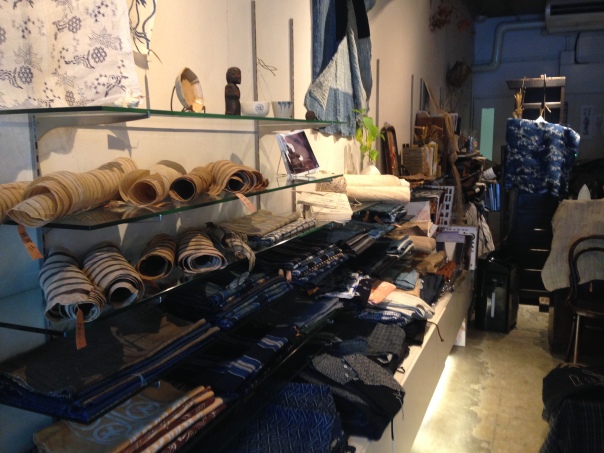
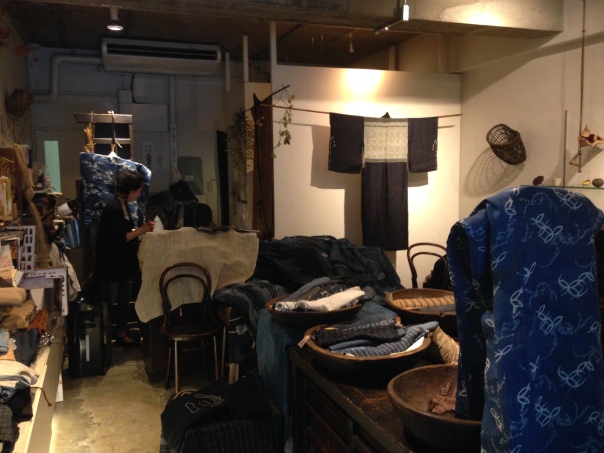
Amazing Antique Repair on Sashiko Furoshiki
Antique Hand Spun Furoshiki with Crossed Feathers Mon
Boro kimono made from hand spun furoshiki
This small kimono for a baby was made out of old material called boro or “rags” pieced together to make usable fabric. The boro material was intended to be the liner but, I have decided to show it off as the shell. the boro material probably came from an indigo dyed tsutsugaki furoshiki or “free hand resist dyed carrying cloth”. These were traditionally given in sets to a new bride and groom and were often dyed with the families mon or “crest”. I love the idea that the newlyweds used it until it became tattered and then remade it into clothing for one of their children. The outer fabric shown below as the liner has a design of small dogs. This fabric was factory made and was meant to replicate a double kasuri or “ikat” material. This fabric shows patches that do not make their way through to the lining material meaning that this material had been used and repaired at the time that it was made into this garment. More than likely it was also a hand me down.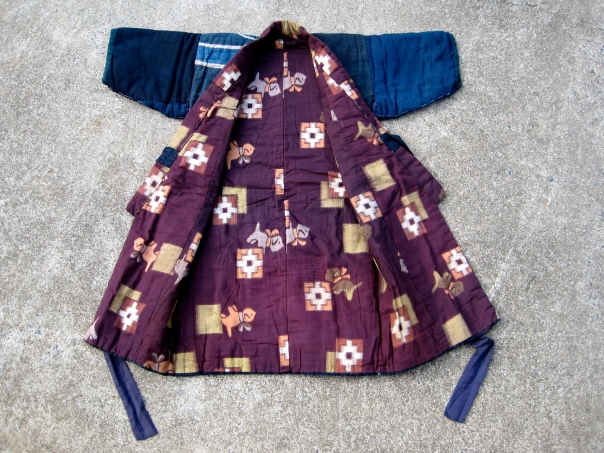

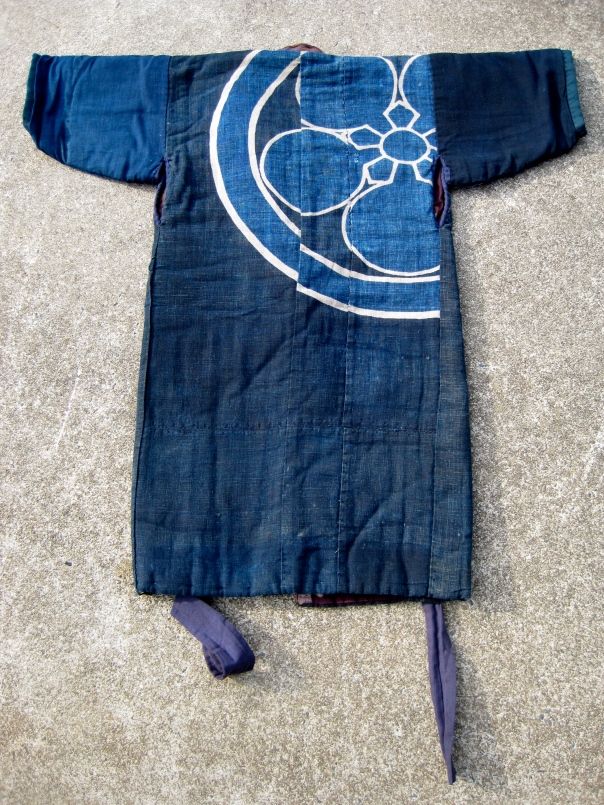


Cotton and Hemp Zanshiori
I recently found this very worn zanshi fabric. The warp is hemp and the weft is cotton and hemp. It has a beautiful worn feel simular to antique linen. It has been dyed with indigo, but the natural color variations in the hemp thread also lend to the design. Zanshiori is fabric that has been woven using the threads left over at the ends of numerous bobbins. due to the use of thread fragments the fabric has a random pattern and a varied texture because of the knots used to bind all the threads in the weft together. Zanshi was often woven at the end of a bolt of fabric to make use of any remaining warp.
I have listed some of this zanshi fabric for purchase here: https://www.etsy.com/listing/178807794/antique-handwoven-japanese-zanshi-indigo?ref=shop_home_active_3
Meiji era furoshiki with patches
This Meiji era furoshiki or “carrying cloth” was probably once the smallest of a set of three furoshiki that were part of a brides trousseau. The central kamon or “crest” and the kanji on the side have been dyed using a technique known as tsutsugaki. I love the simple design and the naive way the kamon and kanji are rendered. What makes this piece so nice are the beautiful patches and stitches that adorn the back and peek through to the front.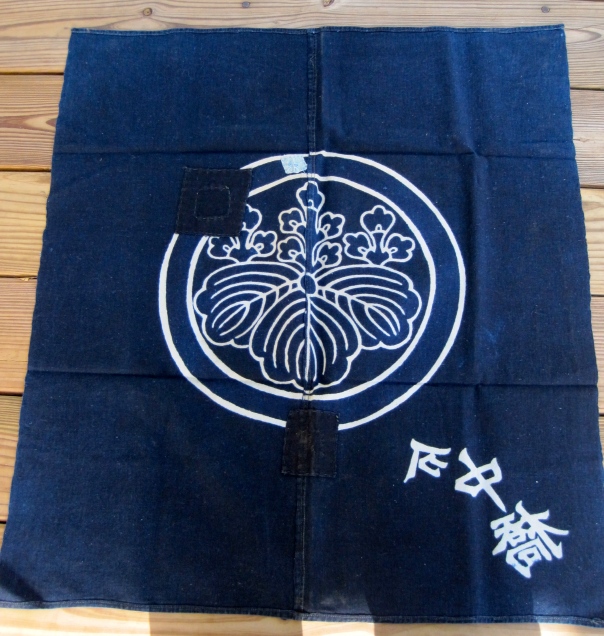



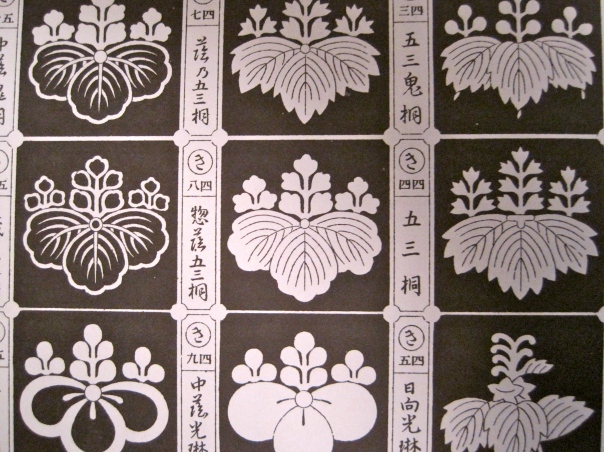
I found this kamon in a Japanese book of family crests compiled in 1913.
This furoshiki can be purchased at my shop: https://www.etsy.com/listing/154792021/antique-japanese-tsutsugaki-indigo?ref=shop_home_active
Edo period katazome patches and sashiko
At first glance these patches seem ordinary. The first is a patch of small sashiko stitches and the second a normal enough blue patch with haphazard stitching holding the two pieces of fabric together. When you turn the piece over it reveals two beautiful patches made from beautiful Edo period katazome.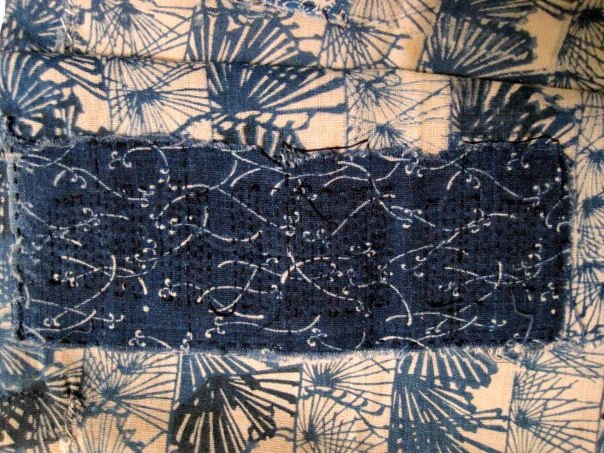
This patch is decorated with an amazing fern design often seen in late Edo and early Meiji tsutsugaki and katazome fabrics. 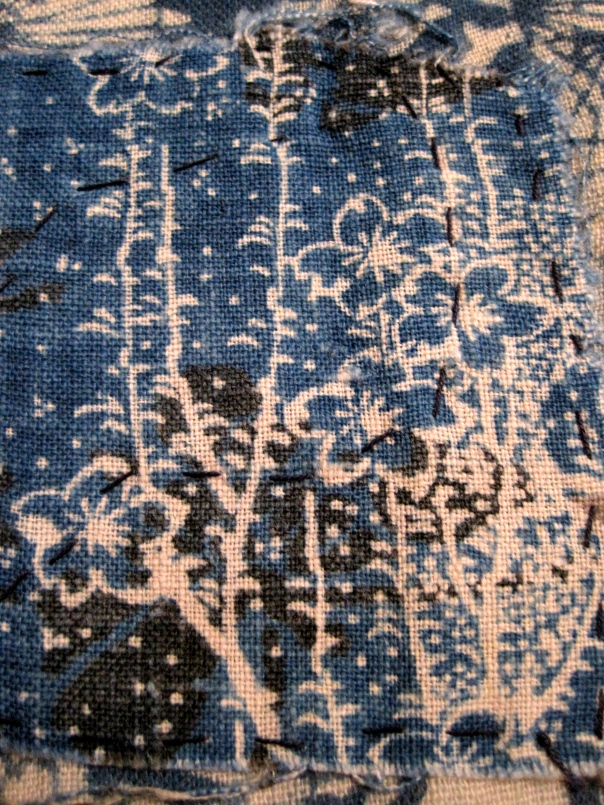
The next patch has a beautiful double design of black leaves and branches on an indigo ground, as well as, resist dyed cherry or plum trees with stylized blossoms. I can’t even begin to understand the process of dying something like this.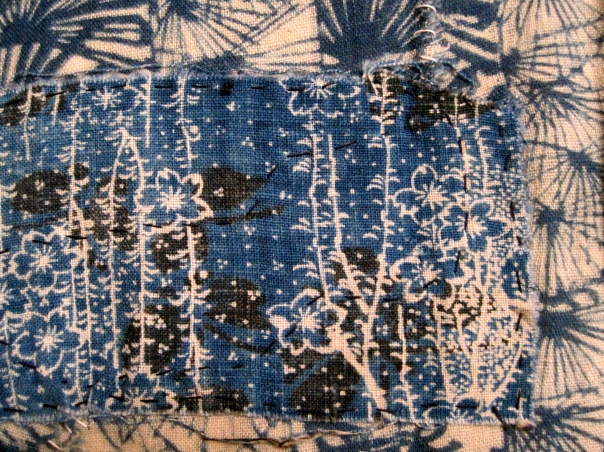

I think these patches elevate this beautiful Edo period katazome, and I am in complete reverence of the masterful hands that created these fabrics so many years ago.
Antique furoshiki made from a nobori
This is a furoshiki, or “carrying cloth” made from three sections of an old Japanese banner. It was produced in the early to mid 20th century. and was dyed using fermented persimmon dye. The kanji was produced using a technique called tsutsugaki. This furoshiki is a great example of the Japanese idea of mottainai or “nothing wasted.” Notice the third section of the furoshiki where the kanji are upside down. 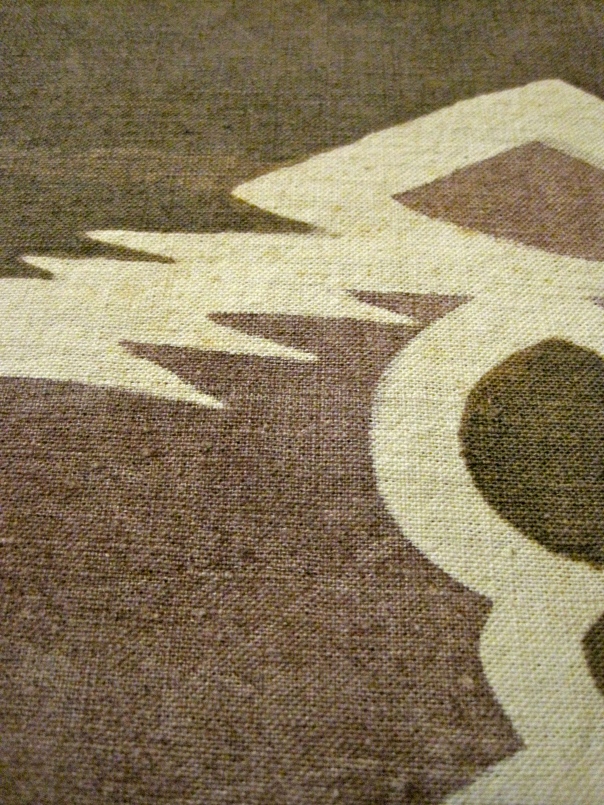

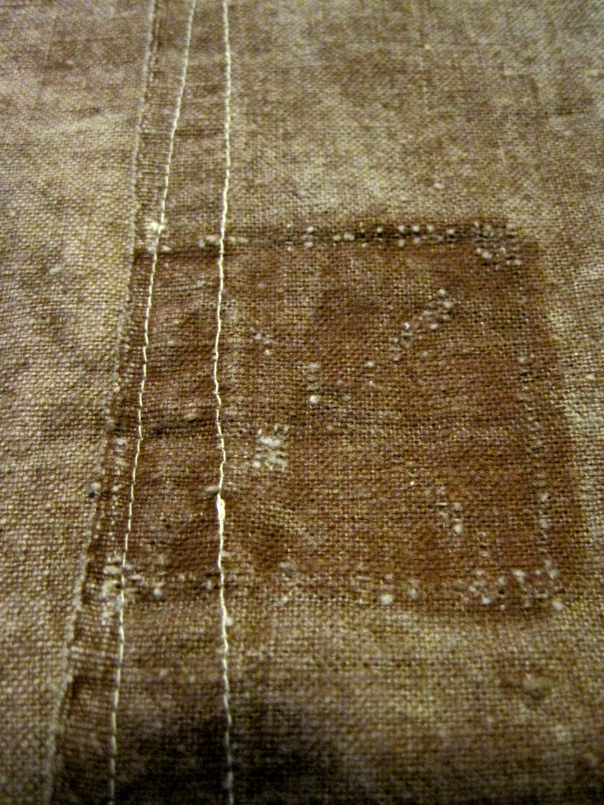
The darker portion above is where the banner would have been attached, via a fabric tab, to a pole that held it aloft. It remained dark while the rest of the banner was sun bleached. 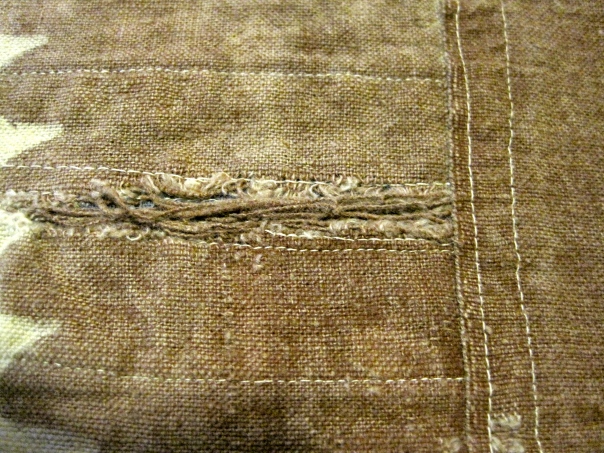
Early Meiji katazome
This early Meiji period katazome is made of indigo dyed cotton that has been hand spun and hand woven. The fabric is thick and has been worn soft by years of use. This piece was probably the top of a futonji and has been pieced together from 15 small pieces of the same fabric. It has also been mended with several large patches. 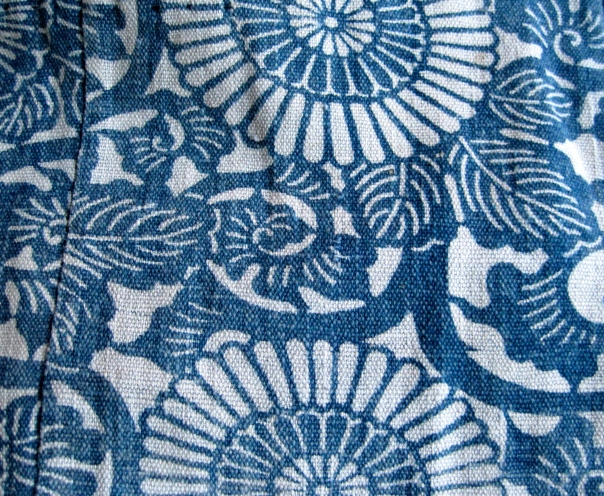
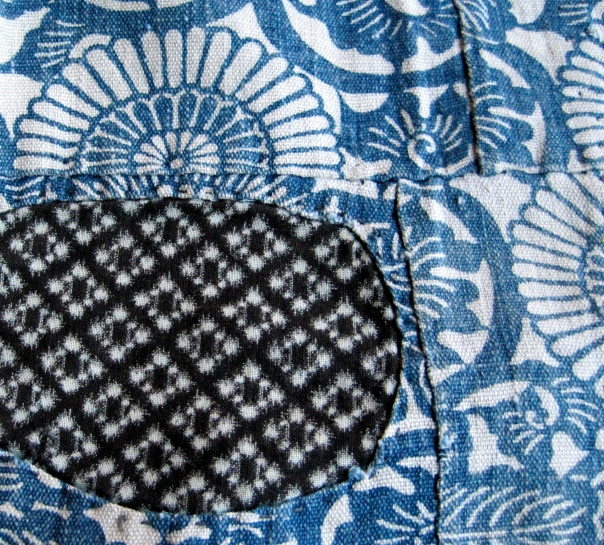
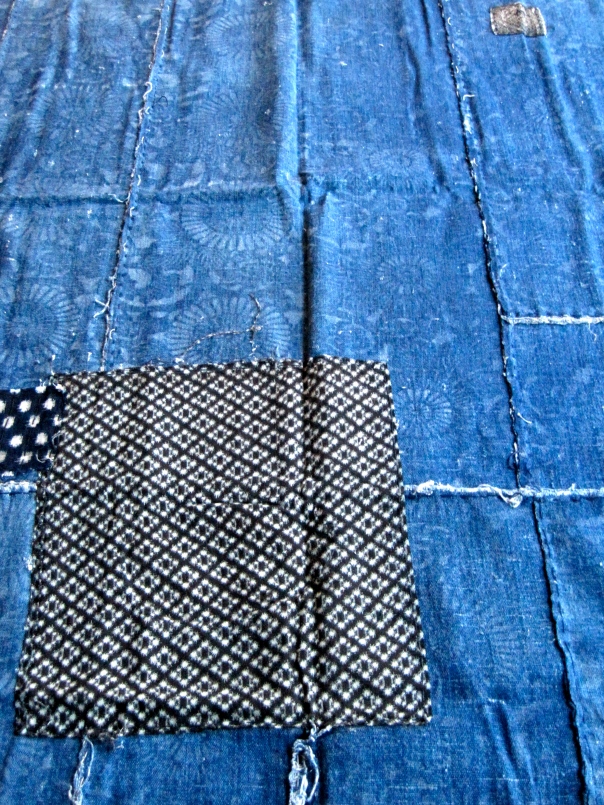
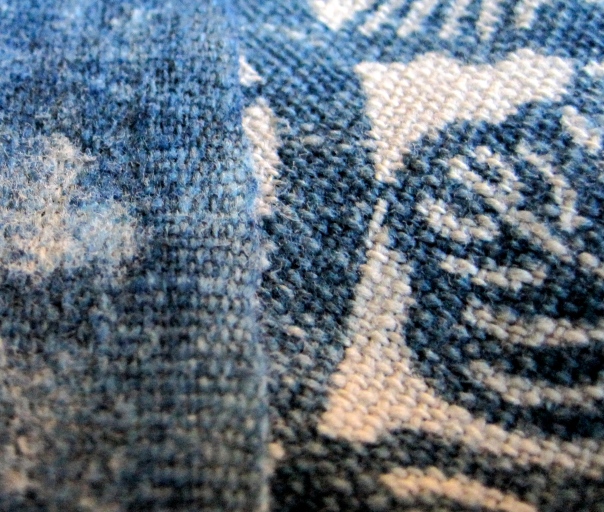
This last photo shows the irregular hand spun threads that produce a fabric with such amazing weight and texture.






